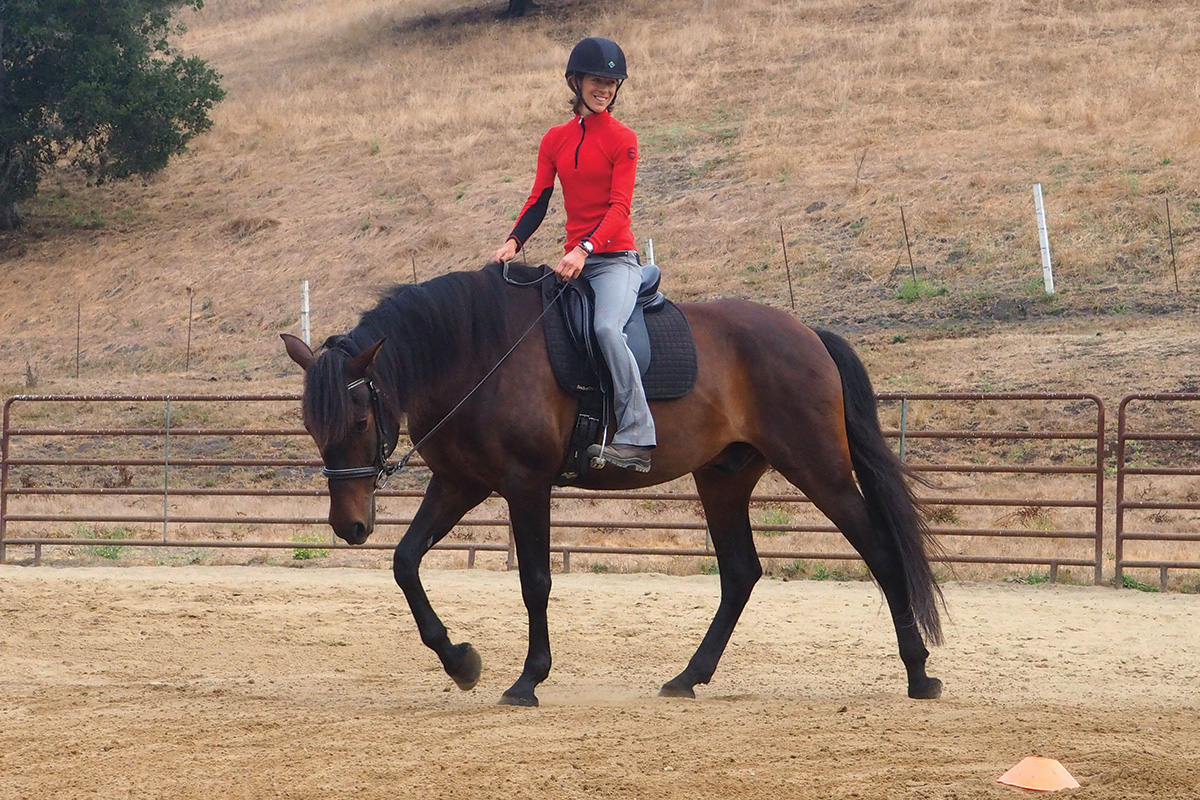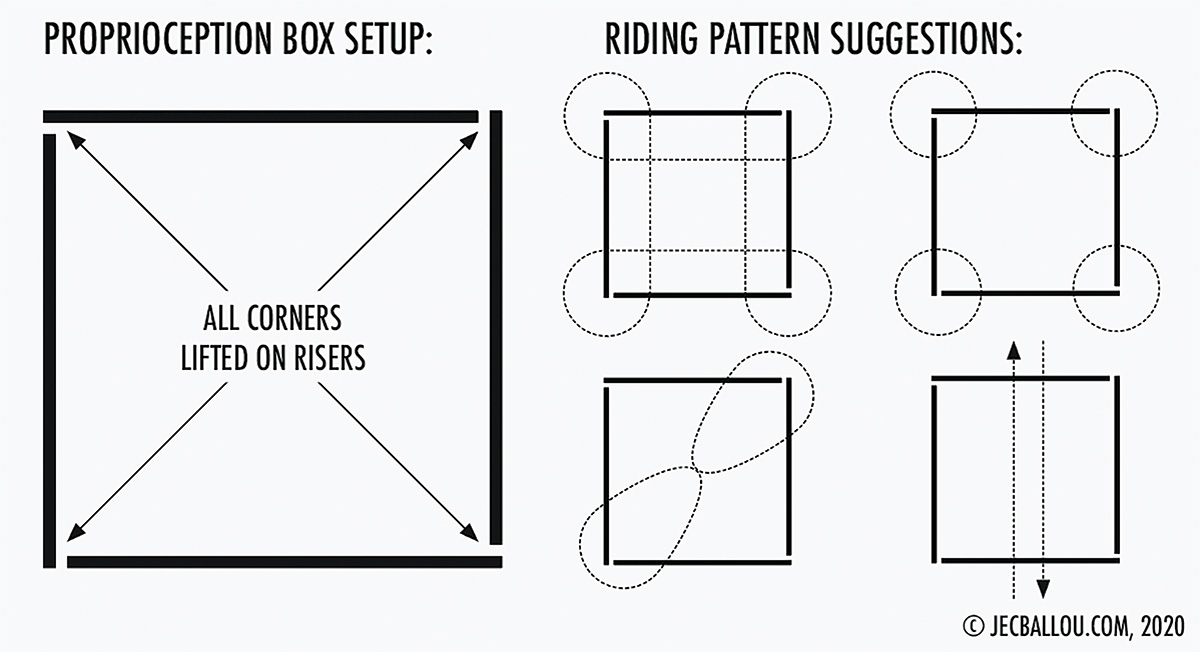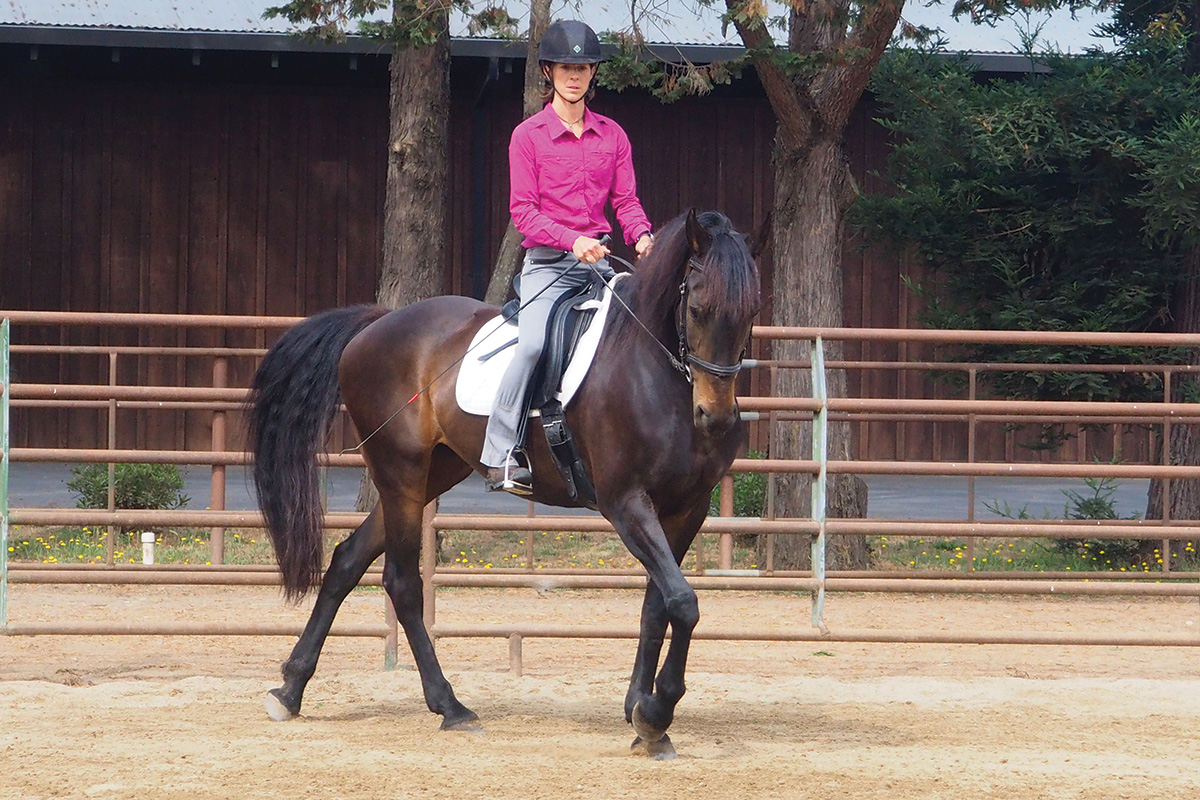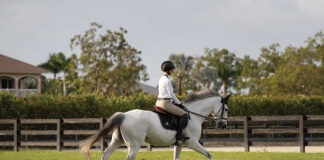Work at the walk, practiced and touted by old classical dressage masters, is always better than letting a horse stand around when he is not able to perform a regular training schedule. Walking your horse has the benefit of allowing for full contraction of the long back muscles in a contraction-relaxation cycle that prevents tension. Further, the fine-tuned motor control that is possible at the walk enables you to help your horse find more range of motion and joint flexion.

Too many of us overlook the value of schooling at the walk, thinking that there is not much to accomplish. To be clear, walk workouts do not improve cardiovascular fitness, but—fear not—cardio plays a minimal role in your horse’s mechanics and movement patterns. However, walking workouts benefit your horse by mobilizing the spinal joints and increasing stimulation of postural muscles.
It’s also worth noting that the equine lymphatic system lacks a central pump. Lymph circulation relies instead on muscular contractions. The lymphatic system helps maintain fluid balances between blood vessels and tissues, which is crucial for not only movement but immunity and injury repair.
Also read – Developing Core Stability for Horse and Rider
During any period of reduced exercise due to weather or time constraints, you can accomplish a great deal in 25 minutes with one of the following walk routines. Within each routine below, spend about two minutes on each exercise, then continue to cycle through them like a circuit until your time is up.
Walking Routine No. 1
For 25 minutes, do the following continuous circuit:
◆ Long and Low Transitions: With the horse in a long-and-low stretched frame, ride transitions from working walk to extended walk; repeat. Aim to keep his head and neck reaching down low toward the ground into a light rein contact during these transitions. He will need to use his core muscles for balance.
◆ Polish Your Turns: Interspersed with intervals of active, ground-covering walking, practice several turns-on-the-forehand and turns-on-the-haunches in each direction. Be sure to ride several energetic walk steps between each turn.

◆ Proprioception Box: Arrange a box on the ground using four ground poles touching at the corners. Ride a variety of patterns over and through the box: cloverleaf, circle around each corner, figure eight, et cetera.
Walking Routine No. 2
For 25 minutes, do the following continuous circuit:
◆ Accordion Topline: Riding around the edge of your arena in a brisk, forward walk, as you practice lengthening and shortening the reins and asking your horse to change frames from longer to shorter.
◆ Spiral In and Out: From a 20-meter circle, spiral in to an 8-meter circle, and then, maintaining inside bend, leg-yield back out to your original 20-meter circle, being careful not to lose energy.

◆ Snowman: Ride once around a 20-meter circle to the left. Then, at the top, change bend and ride a 10-meter circle to the right. Resume the 20-meter circle to the left. Your figure should look like a snowman with a fat body and a smaller head on top.
◆ Simple Ground Poles: Set up as many poles as you have available in a random fashion all around your arena. Proceed in a brisk walk over the poles, and creatively ride various turns and loops.
Walking Routine No. 3
For 25 minutes, do the following continuous circuit:
◆ Speed Changes: Ride various figures in the arena while changing the speed of your walk. Aim for four distinct speeds (super slow, slow, medium and fast), and spend 20 strides at each speed. Repeat.
◆ Cornerstone Transitions: Ride transitions to the halt every 10 strides. At every other halt transition, ask the horse to back up six to 10 steps, then carry on.
◆ Wavy Lines: Ride a “scalloped” edge around the track of your arena. Maintaining a brisk, lively walk tempo, ride a wavy serpentine with approximately 3-meter loops back and forth from left to right, and so on.
When performed consistently (four to five days per week), purposeful walking routines can have a surprisingly beneficial impact on your horse’s body. Although it’s not as outwardly visible, their value is much greater than inactivity. Your horse will thank you!
This article about the benefits of walking your horse appeared in the November/December 2021 issue of Horse Illustrated magazine. Click here to subscribe!






